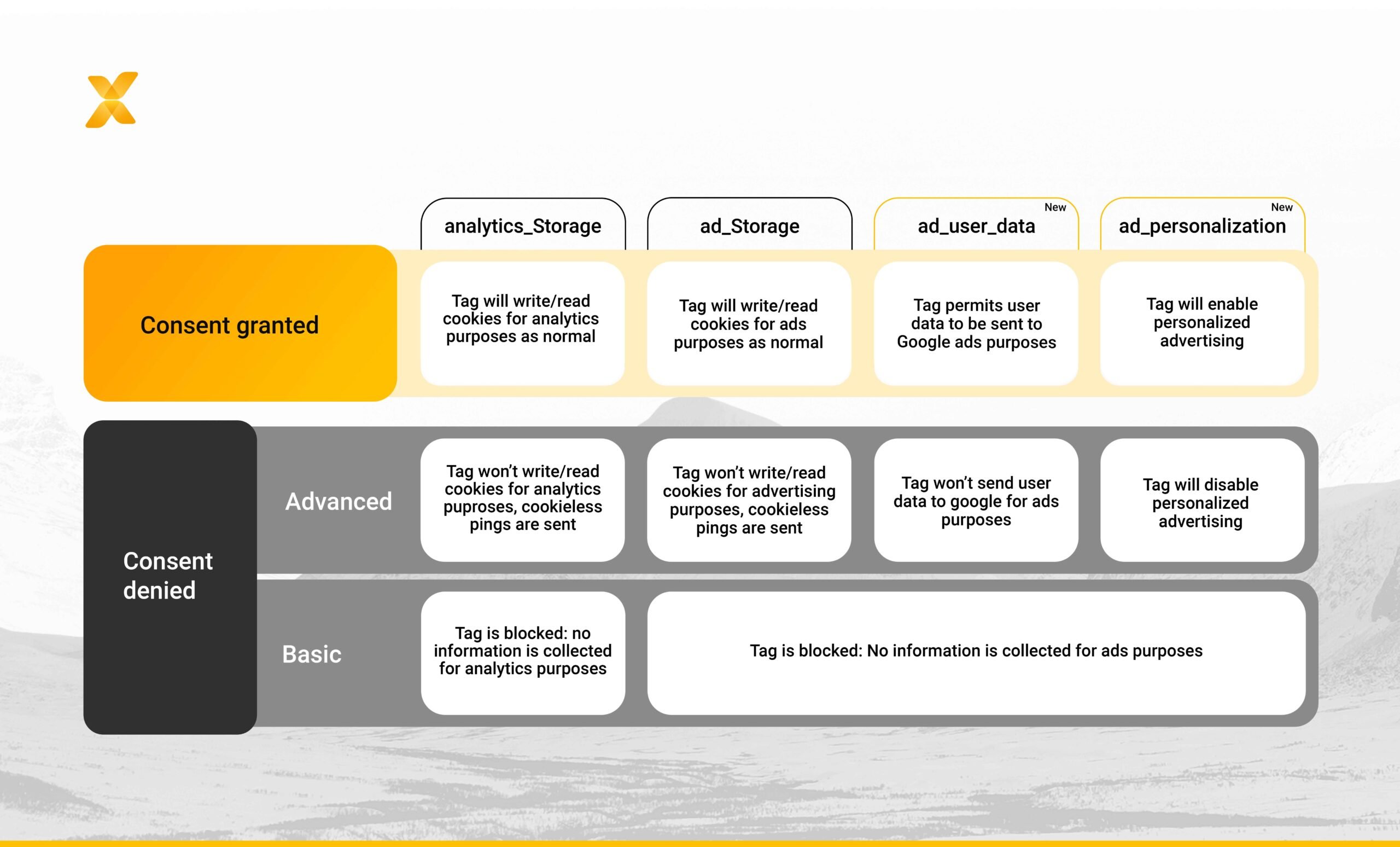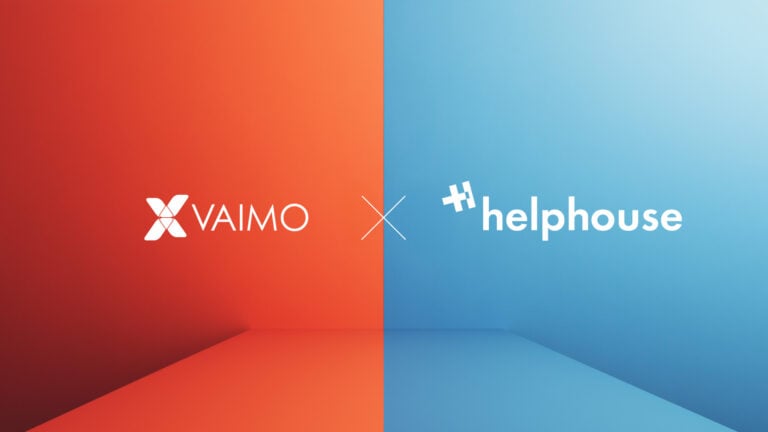Privacy regulations and user consent are becoming increasingly pivotal; Google has introduced an updated tool that addresses these concerns head-on: Google Consent Mode V2. As we brace for the enforcement of the new Digital Markets Act (DMA) in March 2024, understanding and implementing Google Consent Mode V2 is essential.1
In this article, we look into the nuances of Google Consent Mode V2, offering a guide to what it is, how it works, and why it’s a crucial component for businesses navigating the complexities of digital marketing and compliance. We’ll also look at the significant enhancements made from its predecessor to help ensure that your digital channels and advertising efforts are effective and compliant.
TABLE OF CONTENTS
- What is Google Consent Mode?
- How does it work?
- What happens if Google Consent Mode is not activated?
- How Vaimo can help
What is Google Consent Mode?
Google Consent Mode is a tool made by Google that enables the communication of the cookie consent choices from the visitor to Google tags that help you measure the performance of your digital channel and advertising. Additionally, with Consent Mode, Google allows you to model the behavior of the users who did not give consent.
The first version was introduced in 2020 to allow for data collection for Google Analytics and Google Ads while respecting the EU data privacy laws (GDPR). The Google Consent Mode V2 is an updated version created to align with the new Digital Markets Act that goes into effect in March 2024.
Google Consent Mode is not a standalone solution for managing user consent or cookie compliance. It does not replace the need for a Consent Management Platform (CMP) or cookie consent banner/widget responsible for obtaining and managing user consent on websites. Instead, Consent Mode acts as a complementary feature that works in conjunction with a CMP to ensure that Google tags and scripts operate in accordance with users’ consent preferences.
How does it work?
Google Consent Mode is an API that works by introducing four tag settings. Two of which were there in the first version, and two new consent modes for the V2 version:
- Analytics_storage, which asked the user to consent to their data being used for analytics
- Ad_storage, which asked the user if they consent to their data being used for advertising
- Ad_user_data (new): does the user consent to their personal data being used for advertising purposes
- Ad_personalization (new): does the user consent to their data being used for remarketing?
The user will give (status = granted) or refuse (status = denied) consent via the cookie banner. The information that is sent to the Google platforms following this choice will depend on the method that has been chosen for the implementation, basic or advanced:
Basic:
The basic method is blocking all tags with firing rules in GTM and only allowing them to trigger once the correct consent category is granted. This means no information is shared with the Google platforms if the visitor does not accept cookies. There are no cookieless pings and no data modeling on the anonymized data.
Advanced:
With the advanced implementation, triggering rules are removed in GTM, and tags are allowed to fire, adjusting their behavior based on the consent level for each tag setting. When consent is not granted, cookieless pings will be used. Google uses these cookieless pings to model the behavior of non-consented visitors and calculate the estimated conversions.
What happens if Google Consent Mode is not activated?
First, if you have the old version of consent mode implemented (V1), your implementation will continue to work. Still, for full functionality, you will need to update to Consent Mode V2 so that Google knows how to process the incoming data correctly for the two new parameters ad_user_data and ad_personalization.
Without Google Consent Mode, no data will be sent to your Google advertising platforms, which means that measurement, reporting, audience creation, and remarketing possibilities will decrease, leading to less optimized marketing campaigns.
How Vaimo can help
Google Consent Mode V2 represents a significant advancement in aligning data analytics and advertising efforts with the strict demands of user consent and privacy regulations. The transition to Google Consent Mode V2 is not merely beneficial; it is essential for businesses looking to optimize their marketing strategies while ensuring compliance with the Digital Markets Act. Embracing this tool allows businesses to build trust, improve user experiences, and drive meaningful engagement compliantly.
For companies seeking to navigate these changes seamlessly, Vaimo can help. With our expertise in digital commerce and marketing solutions, Vaimo can assist your business in implementing Google Consent Mode V2 effectively, ensuring that your digital marketing efforts are compliant and optimized for performance. Get in touch with our team of experts.
Disclaimer: In this document, you can find a high-level explanation of Google Consent mode, but it cannot serve as an aid for implementation. For further information, contact the Insights & Analytics Team.
Sources









